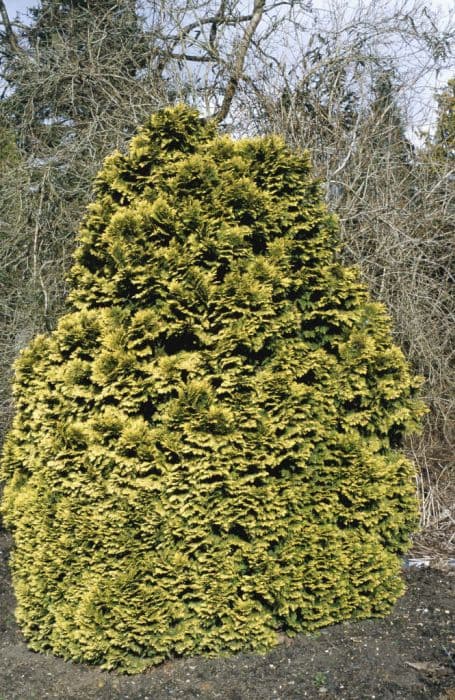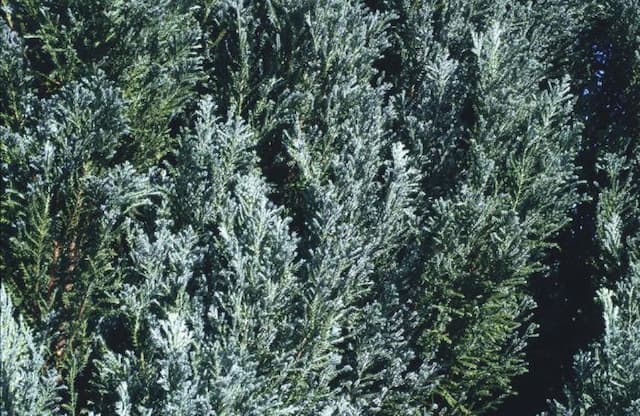Taiwania Taiwania cryptomerioides
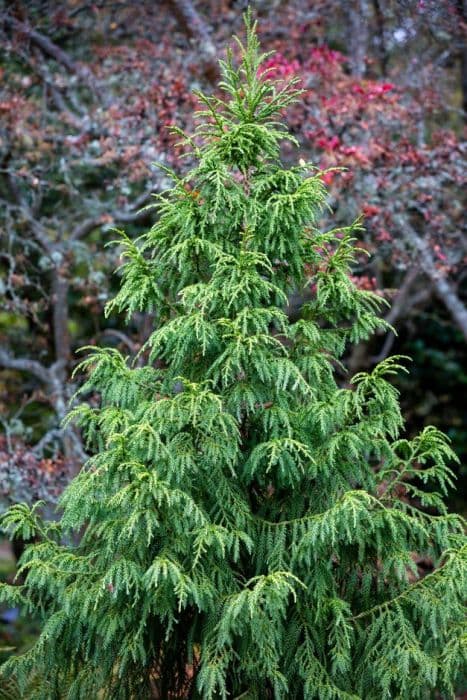
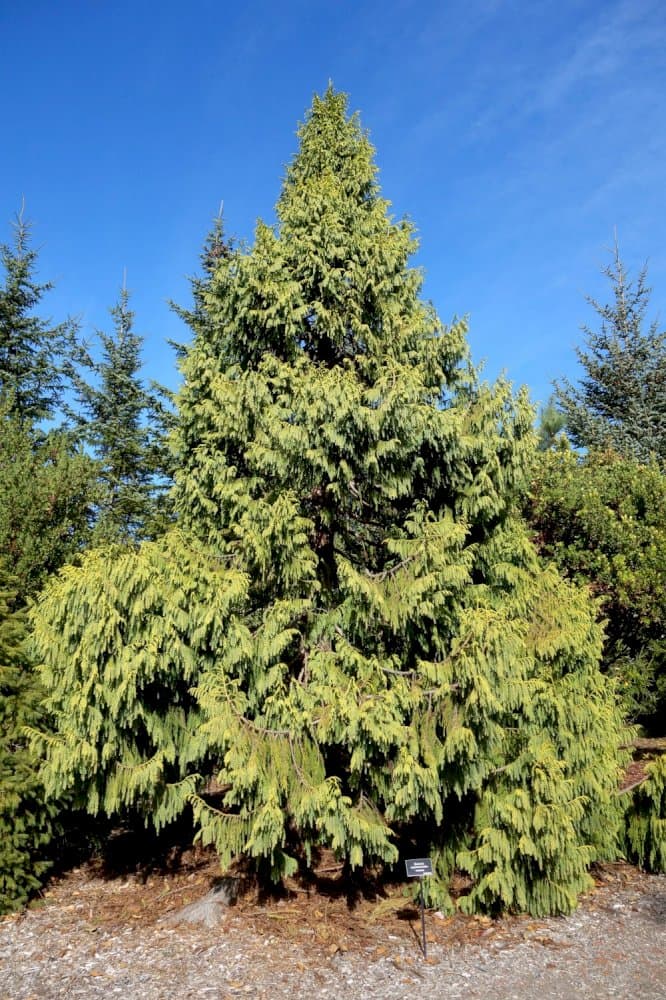
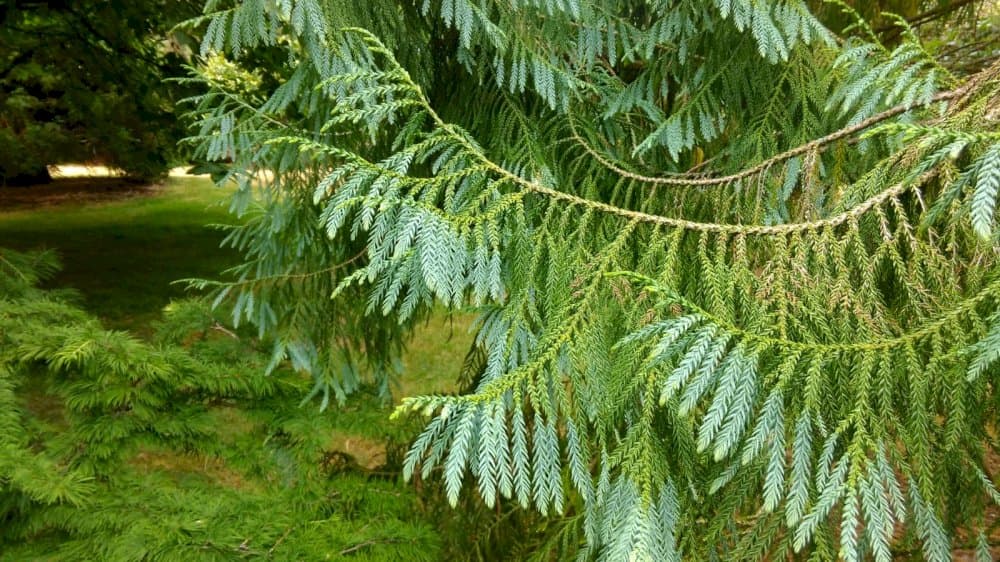

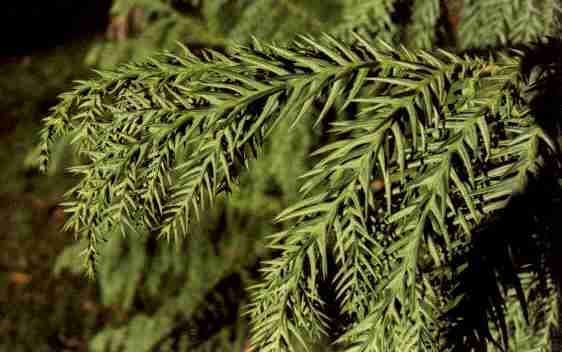
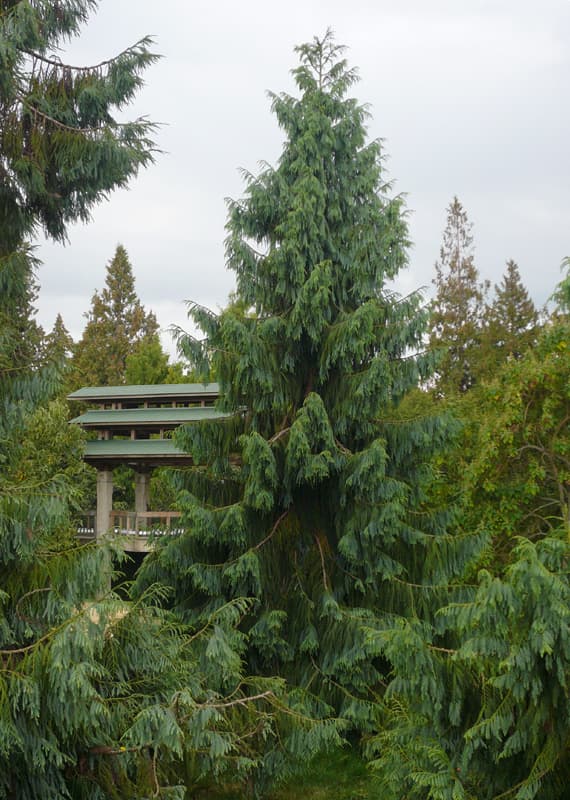
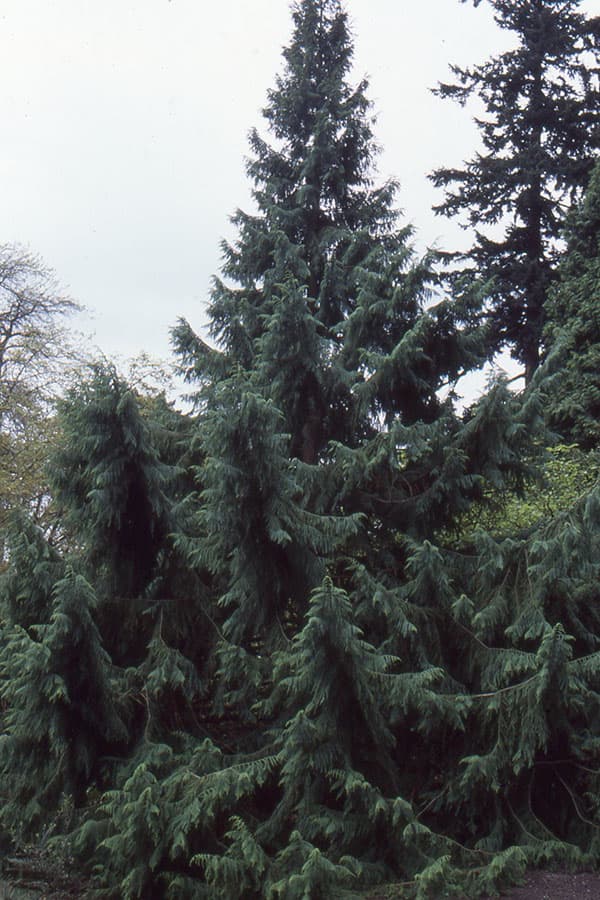
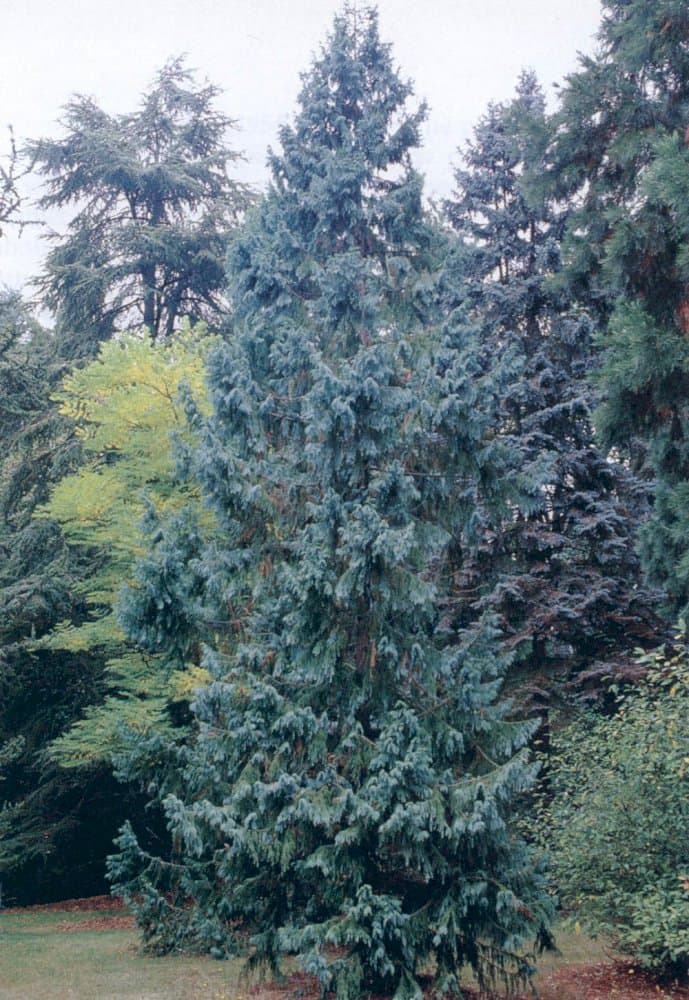
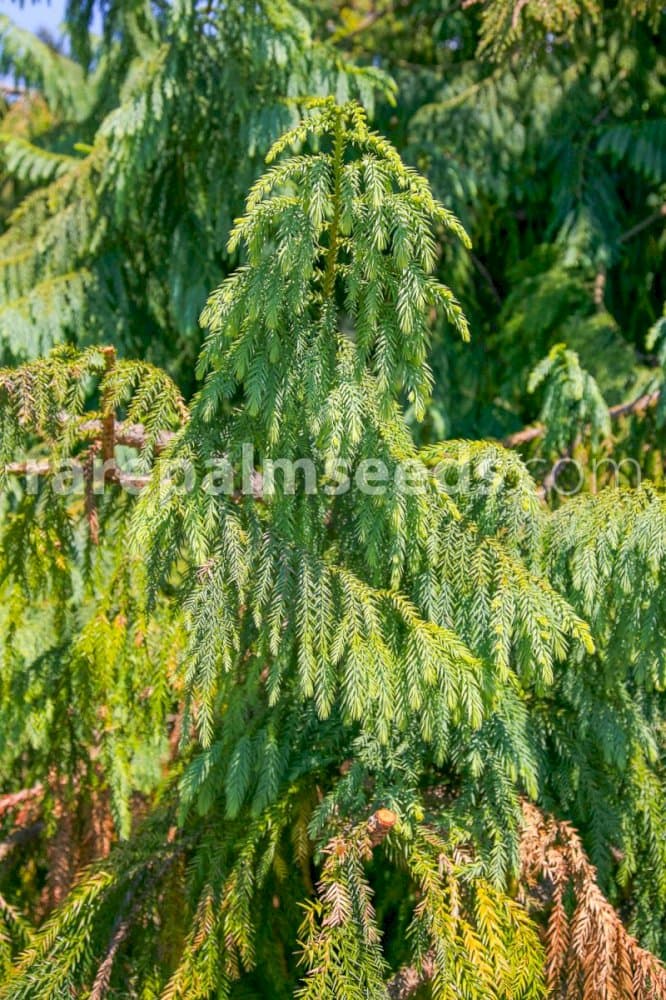
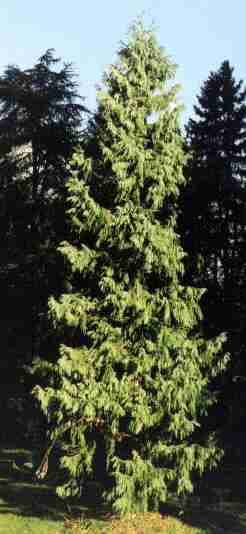
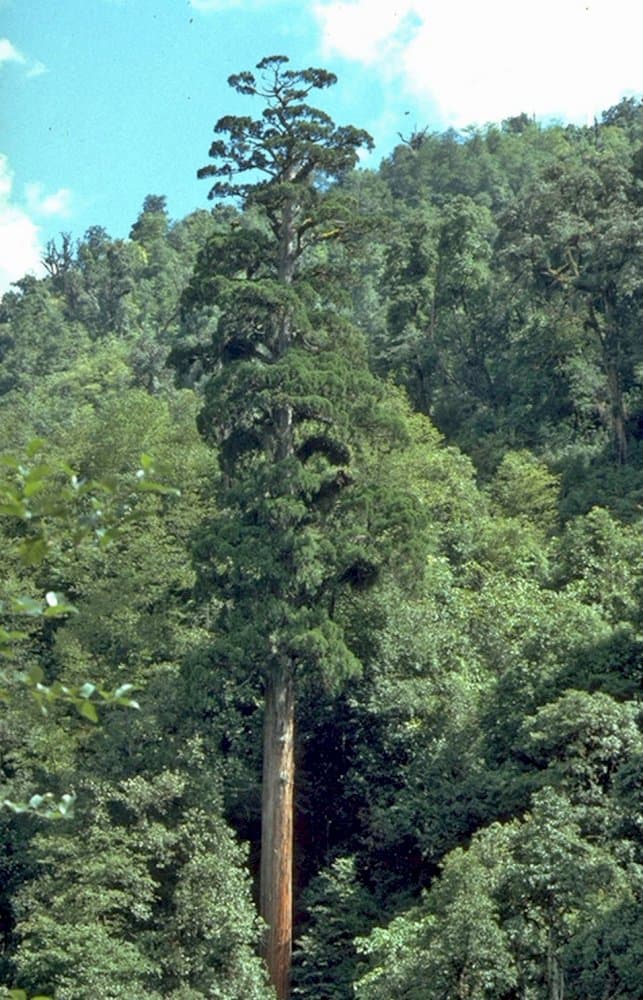
ABOUT
Taiwania cryptomerioides, commonly known as Taiwania, is an evergreen conifer recognizable for its straight trunk and a pyramidal shape. The bark of Taiwania is reddish-brown and deeply furrowed, peeling off in long strips. Its branches are arranged in horizontal tiers, sweeping outwards and slightly drooping at the ends, giving the tree a graceful and dense appearance. The leaves of Taiwania are needle-like, small, and scale-like, covering the twigs densely. They are arranged in a spiral fashion and exhibit a dark green color that remains throughout the year. On the upper side of the leaves, there may be a white stomatal band which adds to the foliage's visual texture. Young trees have softer, more needle-like leaves, while older trees bear the characteristic scaled leaves. The cones of Taiwania are small and spherical, with a woody texture, and they bear seeds that are dispersed by the wind. Overall, the Taiwania carries a regal and enduring presence with its rich, evergreen foliage and classic conifer structure.
About this plant
 Names
NamesFamily
Cupressaceae
Synonyms
Taiwania, Chinese Coffin Tree, Taiwan Cedar, Formosan Cedar, Chinese Taiwan Fir
Common names
Taiwania flousiana, Cunninghamia cryptomerioides, Fokienia hodginsii, Athrotaxis flousiana, Taiwania yunnanensis.
 Toxicity
ToxicityTo humans
Taiwania, also known as Taiwania cryptomerioides, is not widely known for its toxicity to humans. There is limited information on its poisonous properties concerning human ingestion. As with any plant, it is generally advisable to avoid consuming parts of plants not recognized as food, as they could potentially cause adverse reactions due to unknown toxins or irritants.
To pets
Similar to its effects on humans, there is no well-documented toxicity of Taiwania (Taiwania cryptomerioides) in pets such as cats and dogs. Nevertheless, it is always prudent to prevent pets from ingesting plants not intended for consumption, as they could cause gastrointestinal upset or other unforeseen reactions.
 Characteristics
CharacteristicsLife cycle
Perennials
Foliage type
Evergreen
Color of leaves
Green
Height
200 feet (60 meters)
Spread
20 feet (6 meters)
Plant type
Tree
Hardiness zones
8
Native area
Taiwan
Benefits
 General Benefits
General Benefits- Carbon Sequestration: Taiwania cryptomerioides is capable of absorbing carbon dioxide from the atmosphere, thus contributing to the reduction of greenhouse gases.
- Habitat Provision: The Taiwania tree provides habitat and nesting sites for various bird species, mammals, and insects.
- Soil Erosion Control: Its deep and wide root system stabilizes soil and helps prevent erosion in hilly areas where it naturally grows.
- Shade and Cooling: The dense foliage offers shade, which can reduce local temperatures and provide relief from the heat.
- Wood Production: The tree is harvested for its valuable wood, which is used in construction, fine woodworking, and crafting musical instruments.
- Aesthetic Value: Taiwania trees are often planted in gardens and parks for their majestic appearance and ornamental value.
- Cultural Significance: In certain cultures, the tree holds spiritual and historical importance, and is sometimes planted near temples and in sacred groves.
- Biodiversity Support: As part of its ecosystem, it supports biodiversity by offering food and shelter to different species, thus maintaining ecological balance.
 Medical Properties
Medical Properties- Extracts have been studied for anti-inflammatory properties: Some research suggests that extracts of Taiwania cryptomerioides may help reduce inflammation in certain conditions.
- Antioxidant activity: Compounds in the plant, like flavonoids and phenolics, may have potential antioxidant effects.
- Antimicrobial potential: Some studies indicate that extracts from the plant may have activity against certain bacteria and fungi.
- Anti-cancer properties: There is some preliminary evidence that compounds in Taiwania cryptomerioides might have cytotoxic effects on cancer cells, but this is not yet well-established for clinical use.
 Air-purifying Qualities
Air-purifying QualitiesThis plant is not specifically known for air purifying qualities.
 Other Uses
Other Uses- Taiwania lumber is valued for its resistance to decay and termites, making it an excellent choice for high-quality furniture and interior decorations.
- The wood of Taiwania is used in traditional musical instruments in some cultures due to its acoustic properties.
- Due to its fine grain and workability, Taiwania wood is often used for crafting detailed architectural models and intricate carvings.
- Taiwania trees are occasionally planted as ornamental trees in large gardens and parks for their majestic appearance and evergreen foliage.
- The wood shavings and sawdust from Taiwania can be used as a natural mulch for gardening to prevent weed growth and maintain soil moisture.
- In some regions, Taiwania is used in the construction of religious temples and structures because of its durability and the sacred significance it holds in certain cultures.
- Taiwania seeds are sometimes collected and used in craftwork or as beads in jewelry making, showcasing the seed's natural beauty.
- The straight, tall trunks of Taiwania are ideal for ship and boat building, especially for components that require long lengths of sturdy timber.
- Taiwania wood is also used in cooperage for creating barrels, vats, and casks for storing and aging wine or spirits due to its sealing properties.
- The bark of Taiwania can be utilized in the production of natural dyes and tannins for the textile industry.
Interesting Facts
 Feng Shui
Feng ShuiThe Taiwania is not used in Feng Shui practice.
 Zodiac Sign Compitability
Zodiac Sign CompitabilityThe Taiwania is not used in astrology practice.
 Plant Symbolism
Plant Symbolism- Endurance and Longevity: Taiwania, also known as "Taiwan Red Cypress," can live for thousands of years, symbolizing the endurance to withstand the test of time.
- Rarity and Value: As a rare species indigenous to East Asia, the Taiwan Red Cypress represents uniqueness and the heightened value of scarce natural resources.
- Purity and Cleanliness: The wood of Taiwan Red Cypress is often used for its aromatic and preservative qualities, representing the ability to purify and maintain sanctity.
- Historical Significance: Taiwan Red Cypress has a rich cultural and historical importance in Taiwan and East Asia, symbolizing the deep roots and the connection with cultural heritage.
- Strength and Resilience: The Taiwan Red Cypress's ability to grow in mountainous regions with harsh conditions stands for resilience and the ability to thrive in challenging environments.
 Water
WaterThe Taiwania, or Coffin Tree, prefers consistently moist soil, so it's important to water it when the top inch of soil feels dry. Generally, this could mean watering it with about 1 to 2 gallons every week during the growing season, depending on the weather conditions and soil drainage. During the winter months, reduce watering to match the plant's slower growth rate and ensure the soil doesn't become waterlogged. It's vital to mimic the natural environment of the Coffin Tree by providing enough water to keep the soil moist but not saturated. Overwatering can lead to root rot, so always check the soil moisture before watering.
 Light
LightThe Coffin Tree thrives in full sun to partial shade conditions. It's best to place the tree in a spot where it can receive at least six hours of direct sunlight daily, but also has some protection from the intense midday sun, especially in hotter climates. A location that provides morning light with dappled afternoon shade is ideal for maintaining the health and vigor of the Coffin Tree.
 Temperature
TemperatureCoffin Trees are hardy and can tolerate a temperature range from 20 degrees to 85 degrees Fahrenheit. They prefer a cooler climate and can survive occasional drops below the lower limit but should be protected from prolonged exposure to extreme cold. The ideal temperature range for Coffin Trees is between 50 and 70 degrees Fahrenheit, providing a natural, comfortable environment for growth.
 Pruning
PruningPrune the Coffin Tree to remove dead or damaged branches, to maintain its shape, and encourage healthy growth. The best time for pruning is during its dormant season, usually in late winter or early spring before new growth starts. It should be pruned as needed, typically every two to three years, to avoid over-pruning which can stress the tree. Make clean cuts and avoid tearing the bark to maintain tree health.
 Cleaning
CleaningNot needed
 Soil
SoilTaiwania, or Coffin Tree, prefers acidic to neutral soil with a pH of 6.0 to 7.0. Ideal soil mix is a well-draining, fertile loam enriched with organic matter. A mix of two parts garden soil, one part peat moss, and one part perlite or coarse sand is recommended for optimal growth.
 Repotting
RepottingThe Coffin Tree should be repotted every 2 to 3 years to avoid becoming root-bound and to replenish its nutrients. Younger trees may need more frequent repotting, while mature trees can be repotted less often.
 Humidity & Misting
Humidity & MistingThe Coffin Tree thrives at high humidity levels, preferably between 70-80%. It is important to maintain this level of humidity for the health and growth of the tree.
 Suitable locations
Suitable locationsIndoor
Ensure bright, indirect light and high humidity.
Outdoor
Plant in partial shade with moist, well-drained soil.
Hardiness zone
8-10 USDA
 Life cycle
Life cycleTaiwania cryptomerioides, commonly known as Taiwania, begins its life cycle as a seed, released from mature female cones, typically germinating in moist, shaded soil. Upon germination, a seedling emerges, gradually developing a root system and a straight stem with needle-like leaves. As a juvenile, the Taiwania exhibits rapid vertical growth and starts to develop its characteristic conical shape. Upon reaching maturity, which can take several decades, the tree begins to produce both male and female cones, with pollination typically occurring via wind dispersal. After successful fertilization, seeds develop within the female cones over a period of time before they mature and are eventually released to start a new generation. The Taiwania is a long-lived species, with individuals often reaching several hundred years of age, continuing the cycle of growth and reproduction throughout their lifespan.
 Propogation
PropogationPropogation time
Spring to Summer
Propogation: For Taiwania cryptomerioides, commonly known as Chinese Coffin Tree, the most popular method of propagation is by seed. The optimal time for sowing seeds is in the spring, once the threat of frost has passed and soil temperatures are conducive to germination. Seeds should be collected from cones that have dried and opened naturally on the tree. The collected seeds must be cleaned and can be sown directly into a well-draining soil mix. A light covering of soil, no more than a quarter-inch (about 6 millimeters), is ideal for covering the seeds. It is important to keep the soil consistently moist but not waterlogged. Under the right conditions, germination will occur within a few weeks, though it may be variable depending on environmental factors and seed viability.

